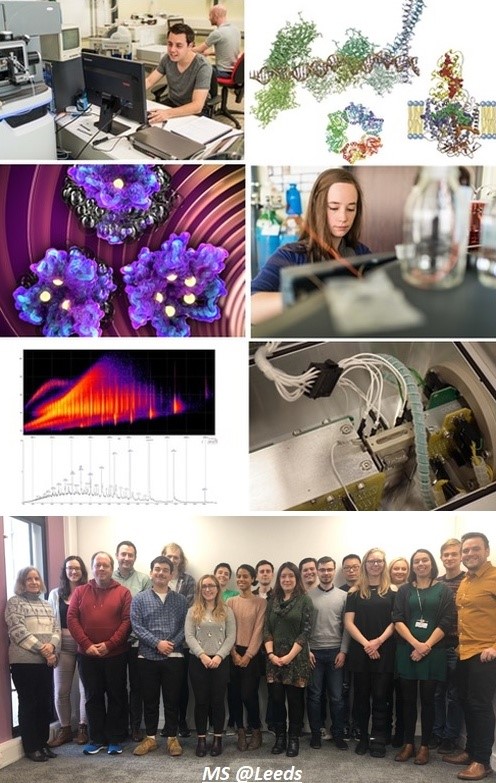Professor Frank Sobott
- Position
- Chair of Biomolecular Mass Spectrometry
- f.sobott@leeds.ac.uk
- Phone
- +44(0)113 343 2576
- Location
- 6.58 Garstang
- Faculty
- Biological Sciences
- School
- Molecular and Cellular Biology
Introduction
Mass spectrometry approaches to dynamic protein structure: from disorder to membrane pores
Our work focuses on elucidating aspects of dynamic and heterogeneous protein conformations and assemblies, using an integrated structural approach based on "native" mass spectrometry, ion mobility, H/D exchange, chemical crosslinking and covalent labelling techniques (e.g. Fast Photochemical Oxidation of Proteins) in combination with electron microscopy and other biophysical and computational methods.
The group develops and applies new mass spectrometry tools for the analysis of the structure and interactions of biomolecules and biomolecular complexes, including lipids, carbohydrates and oligonucleotides. We work at the interface of biology, chemistry and physics and collaborate widely with our Astbury colleagues at Leeds and across the UK as well as internationally, but also with instrument manufacturers and the biopharma industry.
Our mission is to uncover molecular detail of dynamic biological structures relevant to physiology of health and disease, with high spatial and temporal resolution in a near-native environment.
Current major projects
- Protein conformation and aggregation (amyloid)
- Membrane protein structure and lipid interaction analysis
- Time-resolved studies and top-down protein characterization
- Structural characterization of biopharmaceuticals
Detailed research programme
The group is particularly interested in analysing key biomolecular complexes which are at the nodes of the intricate network of protein interactions in the cell. Current projects include the investigation of assembly and disassembly of protein complexes in response to conformational and posttranslational modification states, the effect of ligand or lipid binding, and the link with structure and function.
We are also developing experimental and computational approaches for the characterization of intrinsic disorder in proteins, an important phenomenon which occurs in parts of the proteome but is almost intractable with most conventional structural biology techniques. Intrinsic disorder is also an important factor in the aggregation pathway of α-synuclein and other amyloidogenic proteins linked with neurodegenerative disease. We aim for a comprehensive understanding of the conformational behaviour of the protein, and how it predisposes it towards the formation of oligomeric species and condensates, as well as fibrillary aggregates.
A particularly important group of protein targets are integral membrane proteins, but they can also be particularly challenging to study. A number of more or less “native” reconstitution systems are now available, including detergent micelles, amphipols and more recently also lipid nanoparticles such as nanodiscs and SMALPs. We are developing novel methods to utilize these approaches for the study of protein-lipid interactions, in conjunction with cryo-electron microscopy as well as computational modelling and machine learning.
Using native nano-electrospray ionization and high-resolution ion mobility enables key insights into the subunit architecture and stoichiometry as well as size and shape of protein complexes and assemblies. We deploy novel “top-down” fragmentation techniques such as Electron Transfer Dissociation (ETD) for conformational studies and mapping of interaction sites of e.g. ligands or metal ions. Novel lines of research currently being established aim to bridge the gap between in vitro structural studies of recombinant proteins with their corresponding behaviour in the complex in vivo context, utilizing the capabilities of covalent labelling strategies to provide detail of protein structure and interactions even in live cells.
A further area of interest is the development of mass spectrometry approaches which provide structural information at high spatial and temporal resolution. Hydrogen-deuterium exchange and covalent labelling approaches such as fast photochemical oxidation of proteins (FPOP) have proven their ability to uncover structural detail at single amino-acid level with sub-us to ms time resolution, using orthogonal MS/MS sequencing techniques which link higher-order structural data with detailed information on sequence identity and heterogeneity. Our goal is to implement a comprehensive toolbox of mass spectrometry methods which complement existing structural biology and biophysical approaches, and apply it to important questions in biochemical and biomedical science.


